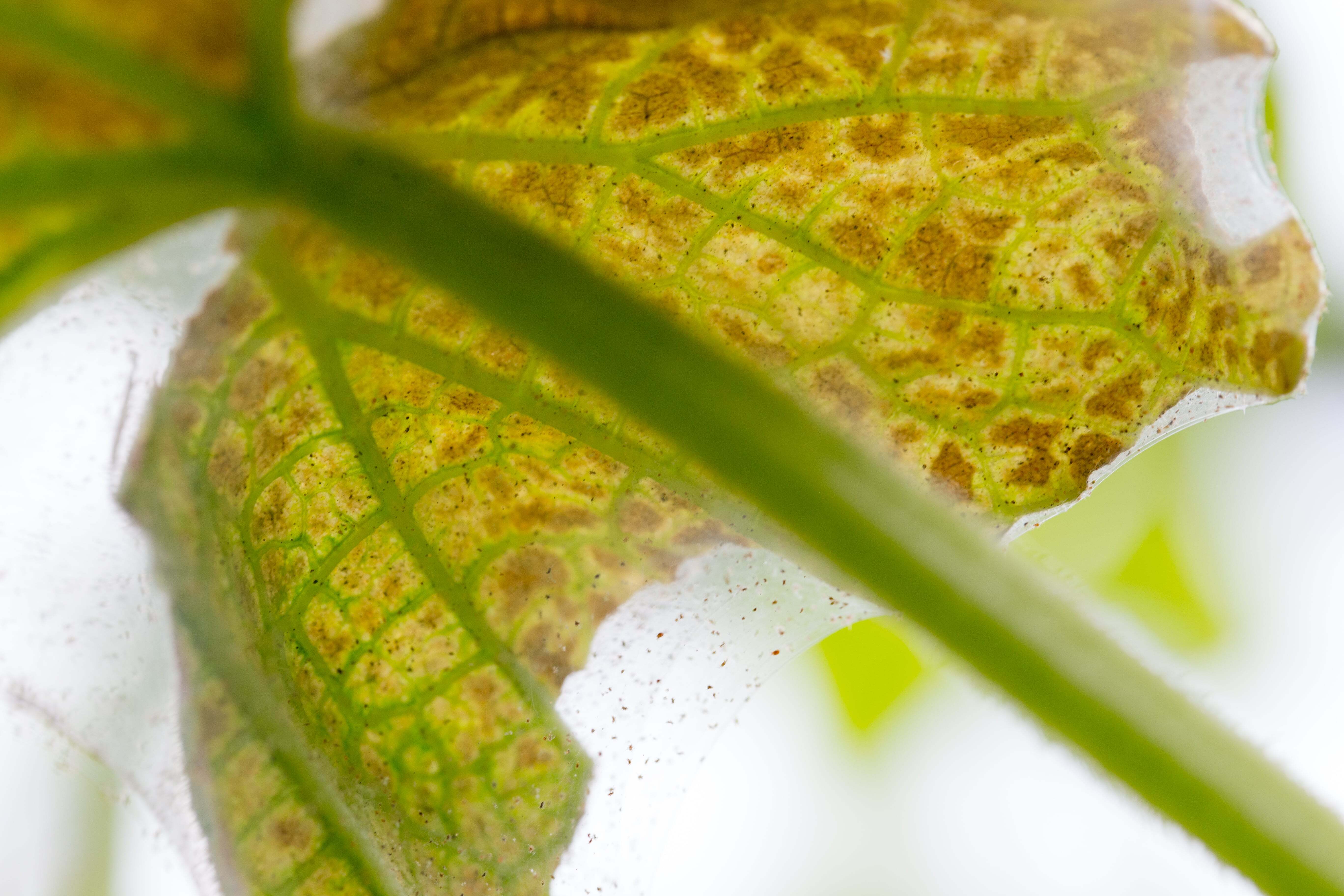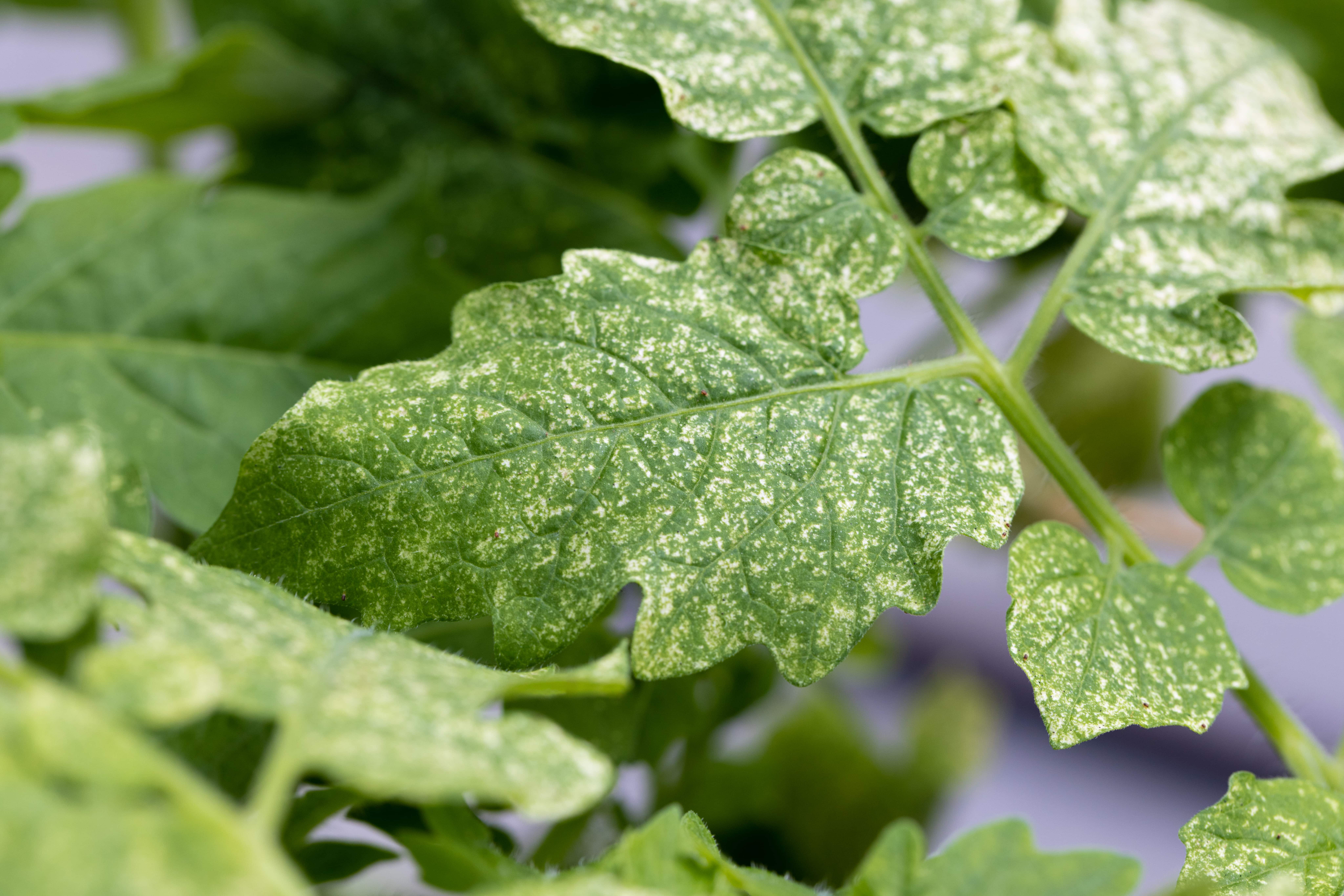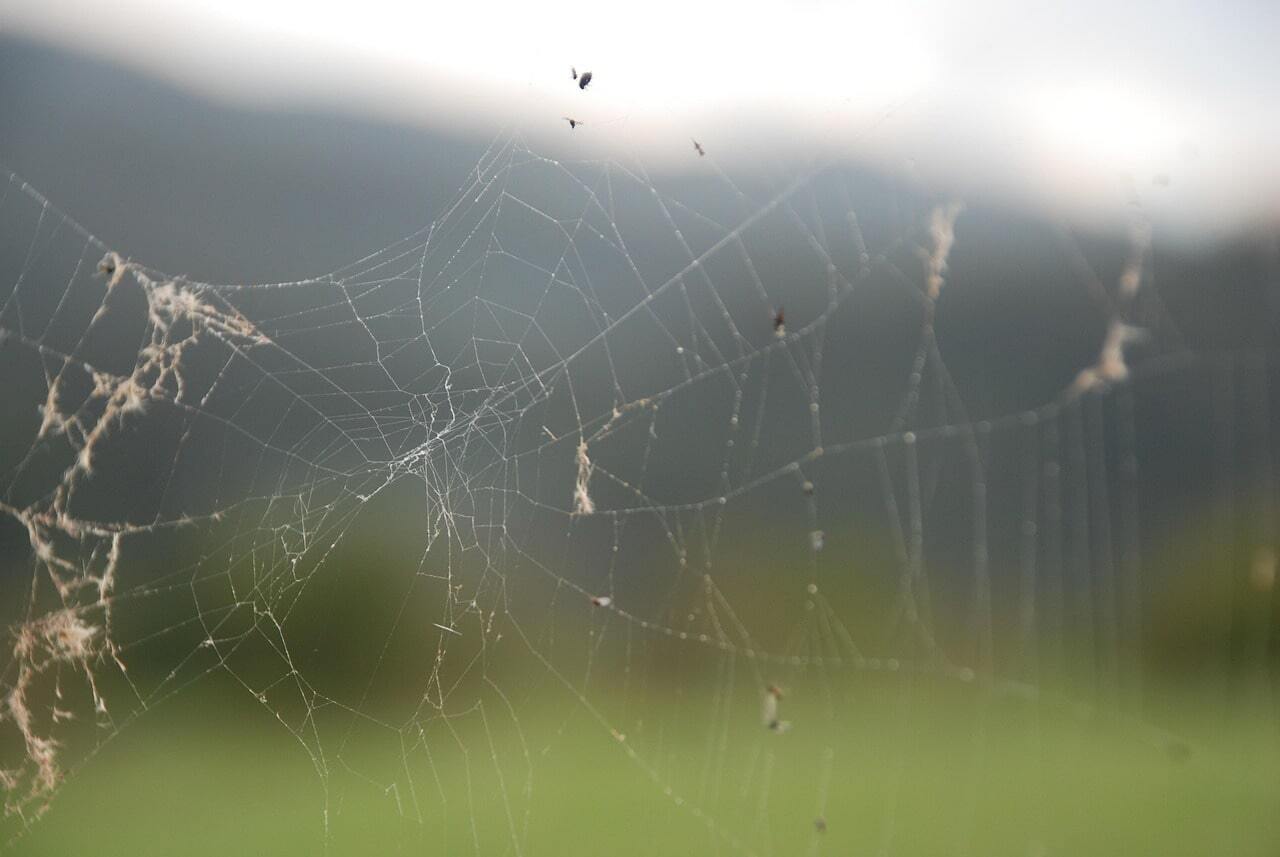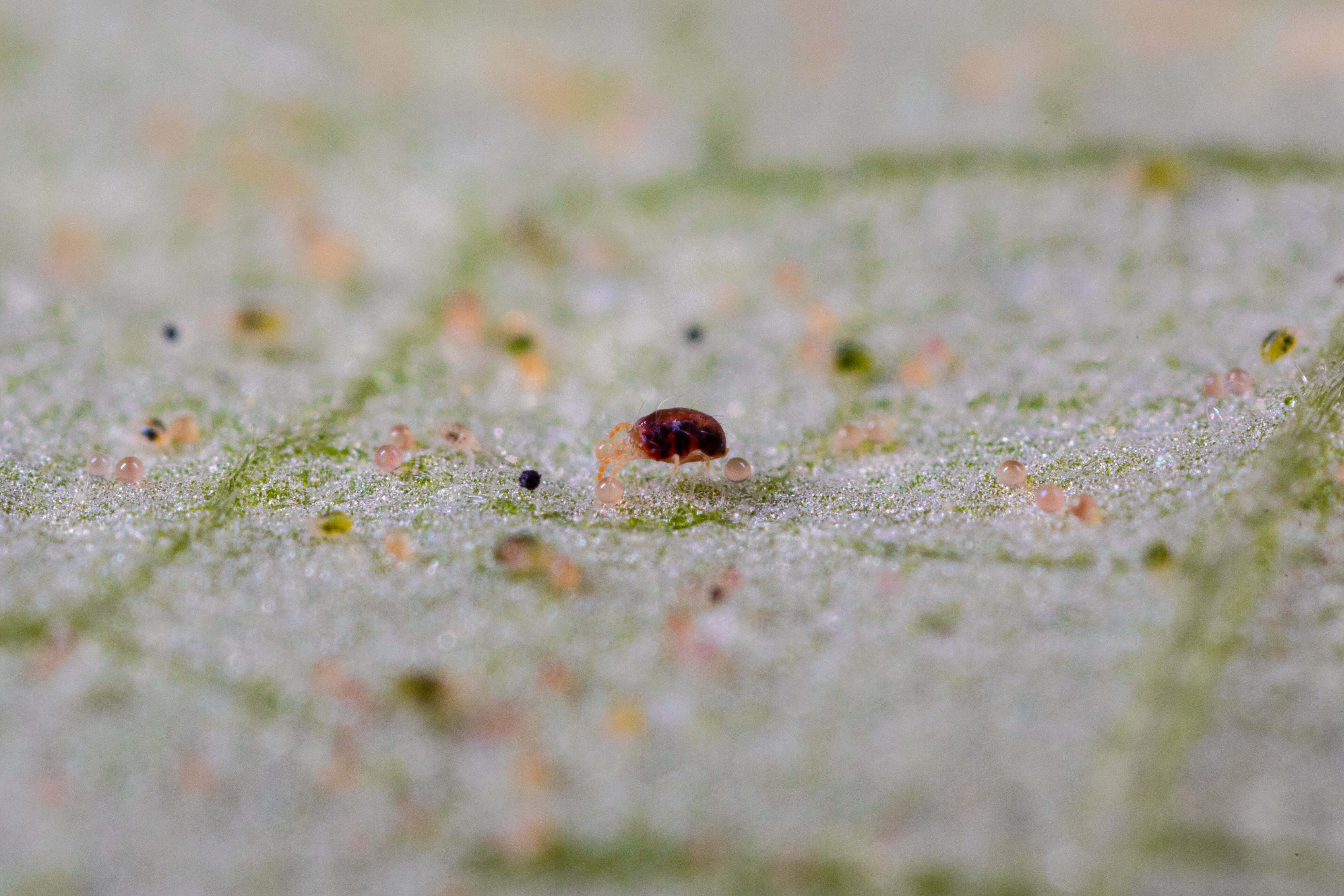Spider Mite Webbing vs. Spider Webs: What’s Haunting Your Plants?
Oct 15, 2025
As Halloween creeps in with its cobweb décor and hair-raising vibes, it’s the perfect time to unravel a mystery that haunts growers year-round: Is that eerie webbing on your plants a sign of a helpful garden spider—or a warning of spider mite pressure?
Let’s break down the difference between these two arachnid architects, so you can give your plants the right kind of care.
The Real Monster: Spider Mites
Spider mites (Tetranychidae family) are microscopic arachnids—not insects—that feed on plant cells by piercing them and sucking out the contents. They thrive in hot, dry conditions, and their populations can explode rapidly, especially in greenhouses, indoor environments, and drought-stressed ornamentals.
What their webbing looks like: fine, silky, and dense—like a sheer veil stretched across leaves and stems. Found mostly on the undersides of leaves, leaf nodes, and crevices. Appears as a protective encasement, not a trap.
Webbing isn’t the only warning sign. Look closely for stippling—tiny yellow or white specks where cells have been drained—followed by broader color changes as leaves fade to pale green, turn silvery or bronze, and eventually yellow. New growth may pucker, twist, or stall, buds can fail to open, and stressed foliage often dries and drops early. Combined feeding and silk give leaves a dull, dusty look, and as pressure builds, webbing thickens and can wrap stems and growing tips, sometimes reaching the soil line in container plants. This reduces light and airflow and makes surface sprays less effective. Because spider mites multiply quickly in warm, dry conditions, catching stippling before webbing spreads is the best cue to act.
The Friendly Phantom: Spiders
Spiders (Araneae) are beneficial predators in most growing environments. They feed on insects and build webs to trap prey, not to live inside.
What their webbing looks like: geometric, spaced out, and sticky—often orb-shaped or layered. Found between branches, across gaps, or suspended in open air. Rarely wraps around leaves or stems. Usually includes a spider hiding within or nearby, waiting in ambush.
Garden spider webs are often visible in morning dew and tend to appear more in fall—making them easy to confuse with spider mite webbing. But their structure and location tell a different story. The easiest way to identify a spider web from a spider mite web, is to try and find the spider.
How to Tell the Difference: Spider Mite Webbing vs. Garden Spider Webs
| Feature | Spider Mite Webbing | Garden Spider Web |
|---|---|---|
| Purpose | Protection for mites | Trap for prey |
| Location | Undersides of leaves, leaf nodes | Between branches, open spaces |
| Appearance | Fine, dense, veil-like | Structured, geometric, sticky |
| Signs | Leaf stippling, yellowing, mite clusters | No plant damage, visible spider |
| Size | Small, tight coverage | Larger, spanning gaps or airspace |
Still unsure? Shake the plant over white paper. If you see moving specks, you’re dealing with spider mites.
The Benefit of Being Proactive
Spider mite pressure can escalate quickly, especially in warm, dry environments. Here’s how to stay ahead: Scout regularly, especially under leaves and around new growth. Increase humidity where possible—mites hate moisture. Avoid broad-spectrum insecticides that harm beneficials. Treat early with targeted biocontrols or soft chemistries if needed.
Natural Enemies of Spider Mites
These beneficials are your front line against spider mite pressure, helping you protect your plants without disrupting your ecosystem.
See active colonies? Use Spidex (Phytoseiulus persimilis), a fast-acting predatory mite that directly targets spider mites. Best applied in warm, humid conditions. For more varying temperatures and humidity or in cases where the problem mite is not identified confidently as spider mite; Spical should be used instead. If you see spider mites as well as other problems like thrips and whiteflies Swirskii can be used to control a myriad of problems.
Need preventative coverage? Use Spical Ulti-Mite (Neoseiulus californicus).
Spotting early hotspots across different areas? Use Spidend (Feltiella acarisuga), a gall midge whose larvae feed on all spider mite stages. Spidend is incredibly mobile and can hone in on different problem areas. Works best in 68°F–80°F and high humidity.
Want to spray & still support natural balance? Use Isarid, a fungal-based soft chemistry that’s compatible with beneficials and ideal for integrated pest management.
Not All Webs Are Wicked
This Halloween, don’t let fine spider mite webs fool you. A little knowledge—and the right allies—go a long way in protecting your plants from real threats while letting nature’s helpers do their work.
Whether you’re growing houseplants, ornamentals, vegetables, or fruit trees—knowing your webs helps you grow naturally and confidently.
FAQ:
Do Spider Mites Make Webs on Plants?
Yes. Spider mites spin fine, protective webbing on the undersides of leaves, around leaf nodes, and sometimes across stems and soil surfaces. This webbing shelters their eggs and feeding colonies and is a key sign of active pressure.
Can spider mite webbing harm my plants?
Yes. The webbing itself can block light and airflow, but more importantly, it signals that mites are actively feeding. This feeding damages plant tissue, leading to stippling, yellowing, leaf curling, and eventual leaf drop.
How fast can spider mites spread?
Very quickly. Under warm, dry conditions, spider mite populations can double in just a few days. A small hotspot can become a widespread problem in a matter of weeks if not addressed early.
Can I just wash off the webbing?
Rinsing plants with water can help reduce mite numbers and remove some webbing, but it won’t eliminate the problem. Mites and their eggs often remain hidden in crevices. Follow up with scouting and appropriate biological control or soft chemistry.
Do garden spiders help control spider mites?
Indirectly, but not effectively. While garden spiders don’t specifically target spider mites, they help reduce overall pest pressure by feeding on a variety of insects. Natural ocurrences of predators is normal, and often not enough to fix a problem in its own right. That said, their presence is a good sign of a balanced ecosystem.
What’s the best way to confirm a spider mite problem?
Use the white paper test. Gently shake a leaf over a sheet of white paper. If you see tiny moving specks, you’re likely dealing with spider mites. A hand lens or microscope can help confirm the ID.


